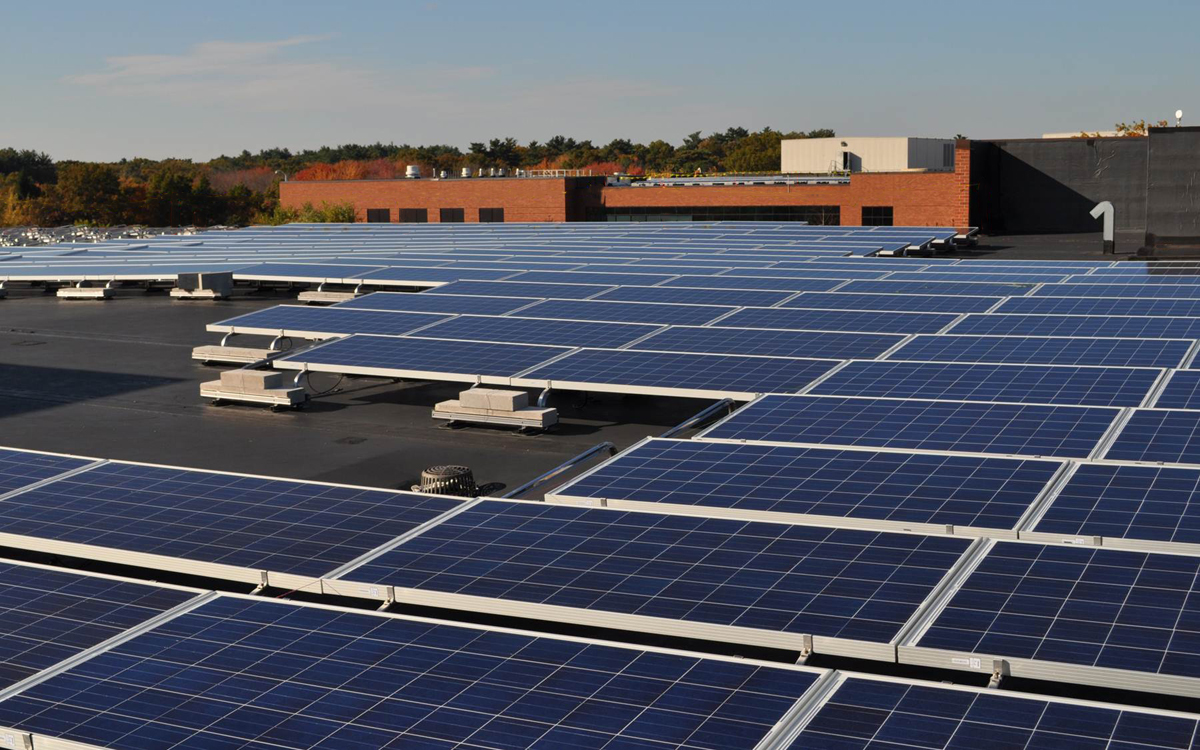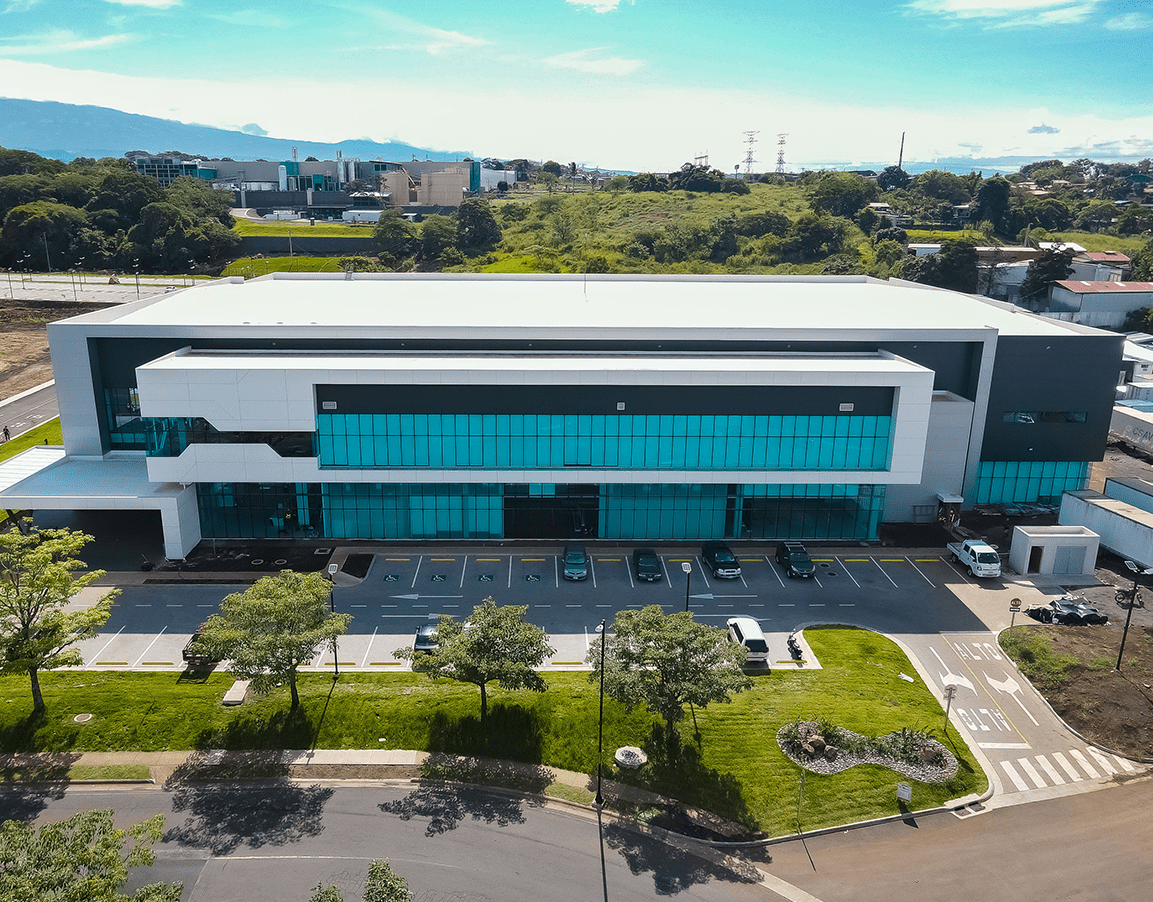This is the first in a two-part series focused on Teradyne’s legacy, approach, and successes in creating a more sustainable business.
Teradyne’s sustainability journey began three decades ago when the company’s first environmental health and safety (EHS) program was established. At that time, efforts were centered around compliance and employee safety requirements, with a focus on building infrastructure initiatives, including more energy efficient lighting, HVAC automation, building management systems, low irrigation plants, and recycling programs.
Today, Teradyne has expanded its environmental focus and commitment to one of deep understanding and engagement across all levels of the company, and with partners, customers, and industry working groups, including the Sustainability Roundtable, SEMI Semiconductor Climate Consortium, the Responsible Business Alliance, and the Carbon Disclosure Project. Everyone is focused on the same goal.

Teradyne’s Five Focus Areas for More Sustainable Business Operations
For Teradyne to make progress at both speed and scale, we look to leverage past learnings, collect and understand current data, identify emerging technologies, and harness human enthusiasm. We focus on five main areas:
- Energy
- Supply Chain
- Waste
- Water
- Buildings and the Workplace
Defining and Measuring Progress
In the areas of energy and supply chain, Teradyne utilizes the Greenhouse Gas Protocol to measure its sustainability efforts. For more than two decades, this multi-stakeholder organization has brought together businesses, government organizations, and NGOs from around the world to develop internationally accepted greenhouse gas (GHG) accounting and reporting standards. This helps organizations, like Teradyne, identify and manage their GHG emissions, thereby reducing their carbon footprint and contributing to a greater global effort to address climate changes.
The Protocol focuses on the identification, measurement, and decrease in emissions from 3 main areas, defined as ‘Scopes.’
- Scope 1: Emissions from sources that are owned or controlled by the organization, such as fuel combustion in vehicles or buildings.
- Scope 2: Indirect emissions from the generation of energy (such as electricity) purchased and consumed by an organization.
- Scope 3: Indirect emissions from areas such as the extraction and production of purchased materials and fuels, the transportation of goods, waste disposal and employee commuting.
Energy – Scope 2 of the GHG Protocol Corporate Standard
Energy efficiency is an important pillar in Teradyne’s sustainability efforts in both its business operations and products. Given the increasing global demand for electricity and the fact that only about a third of today’s electricity is generated from renewable sources, optimizing a business to do more with less energy is an important strategy. In parallel to initiating energy-saving technologies and practices, contributing directly to the growth of renewable energy both on-site and in the greater energy grid can contribute to increasing global renewable energy sources.
In our day-to-day operations, Teradyne is engaged in initiatives in both areas – energy efficiency and source. In the area of increasing efficiency, we have continued to utilize more efficient technologies in our building infrastructure, increased automation, and adopted new best practices to use space more efficiently. All of these have enabled the company to maintain a flat carbon footprint in global facility infrastructure even as our employee numbers have grown.
The real opportunity for significant change is in the creation of more renewably produced energy. Teradyne’s goal is to move to 100% renewables in the US by 2030, which will have an impact on almost half of the company’s total global footprint.
In countries such as Costa Rica where the construction of our new building was completed in 2021, a nationwide green energy infrastructure already exists with 98.5% of all energy coming from renewable sources. Teradyne has also installed on-site solar at two of our owned locations that together generated 993 megawatts of electricity in 2020.

The scale needed to address the carbon impact of energy production can only be found in directly working with grid operators to accelerate their use of renewables in production and the resulting creation of a greener energy grid for all. In February 2023, Teradyne signed a Virtual Power Purchase Agreement (VPPA) with an associated solar project projected to be online by the end of 2024 or early 2025. A VPPA is an agreement that provides Renewable Energy Credits or Certificates (RECs) from a specific renewable energy project located offsite to the company. The renewable energy generated is fed into the local power grid. VPPAs are powerful tools for making ambitious renewable energy targets a reality. With this VPPA, Teradyne enables a long-term supply of renewable energy.
Moving forward, Teradyne will continue to pursue this strategy of identifying where we can help create more renewable energy in the areas in which we operate. In the end, the world will be better for the clean energy they can deliver.
Materials/Supply Chain – Scope 3 of the GHG Protocol Corporate Standard
Scope 3 targets the indirect value chain emissions, which include both upstream and downstream emissions. Upstream emissions are related to purchased or acquired goods and services. Downstream includes the emissions related to sold goods and services. For Teradyne, the emissions of concern for Scope 3 are found in the upstream provision of materials and manufacturing of Teradyne products and the downstream use of our products. To reach our goals over the next few years requires working collaboratively with suppliers, large contract manufacturers, and our customers to identify and implement agreed upon areas of change.
Teradyne is also working with industry associations such as SEMI to collect data, and define and standardize practices, around supply chain environmental impacts. With SEMI membership at more than 2400 companies around the world, the opportunity for impact at scale is significant.
Addressing Issues Beyond Scope 2 and 3
Teradyne has a proven track record in thoughtfully and successfully addressing both Scope 2 and Scope 3 emissions impacts. In part two of this series, the focus moves to the way we mitigate our environmental impact through the diversion of waste, addressing water efficiency, and making the use of our buildings more sustainable.
If interested in learning more about Teradyne’s environmental activities, read our CSR Report.